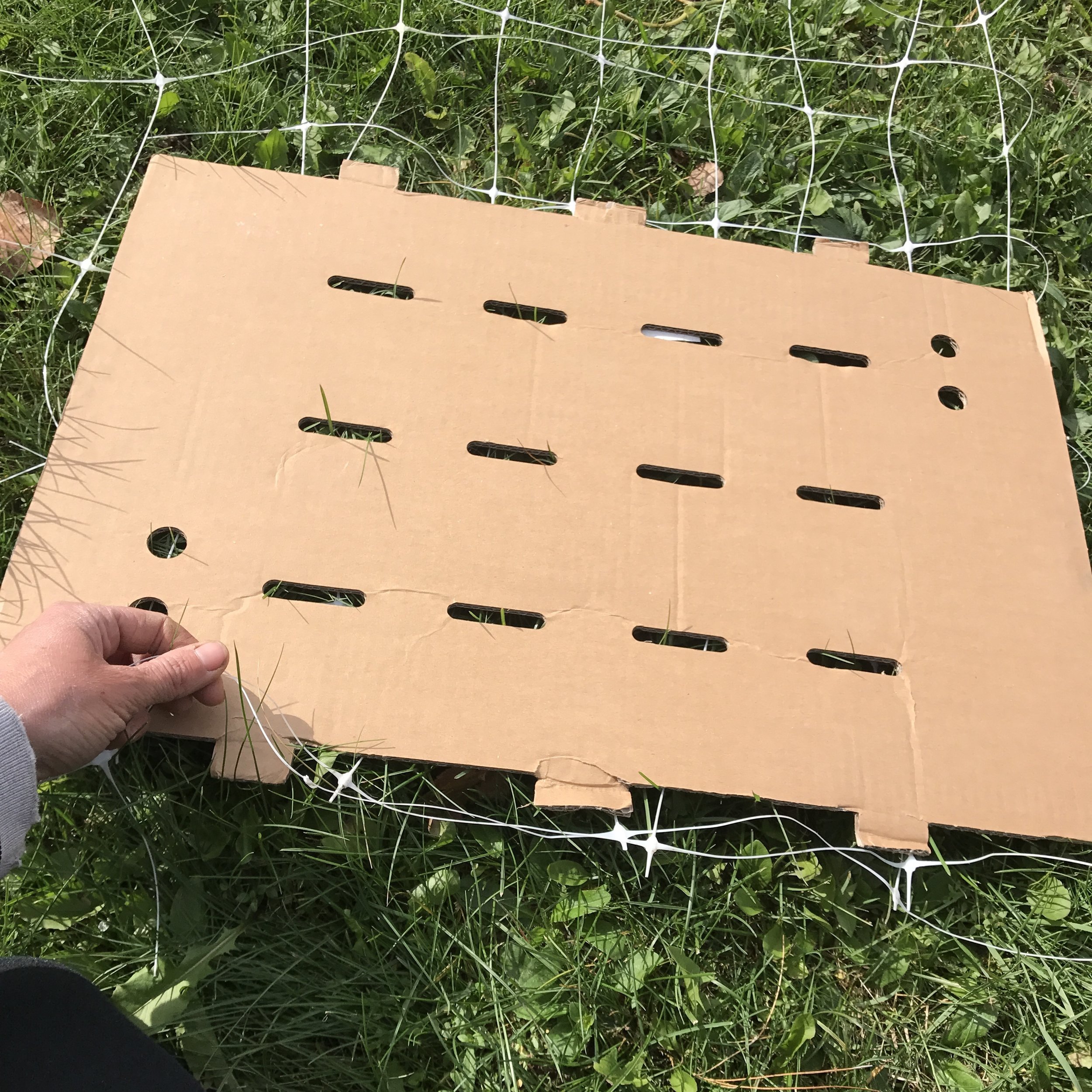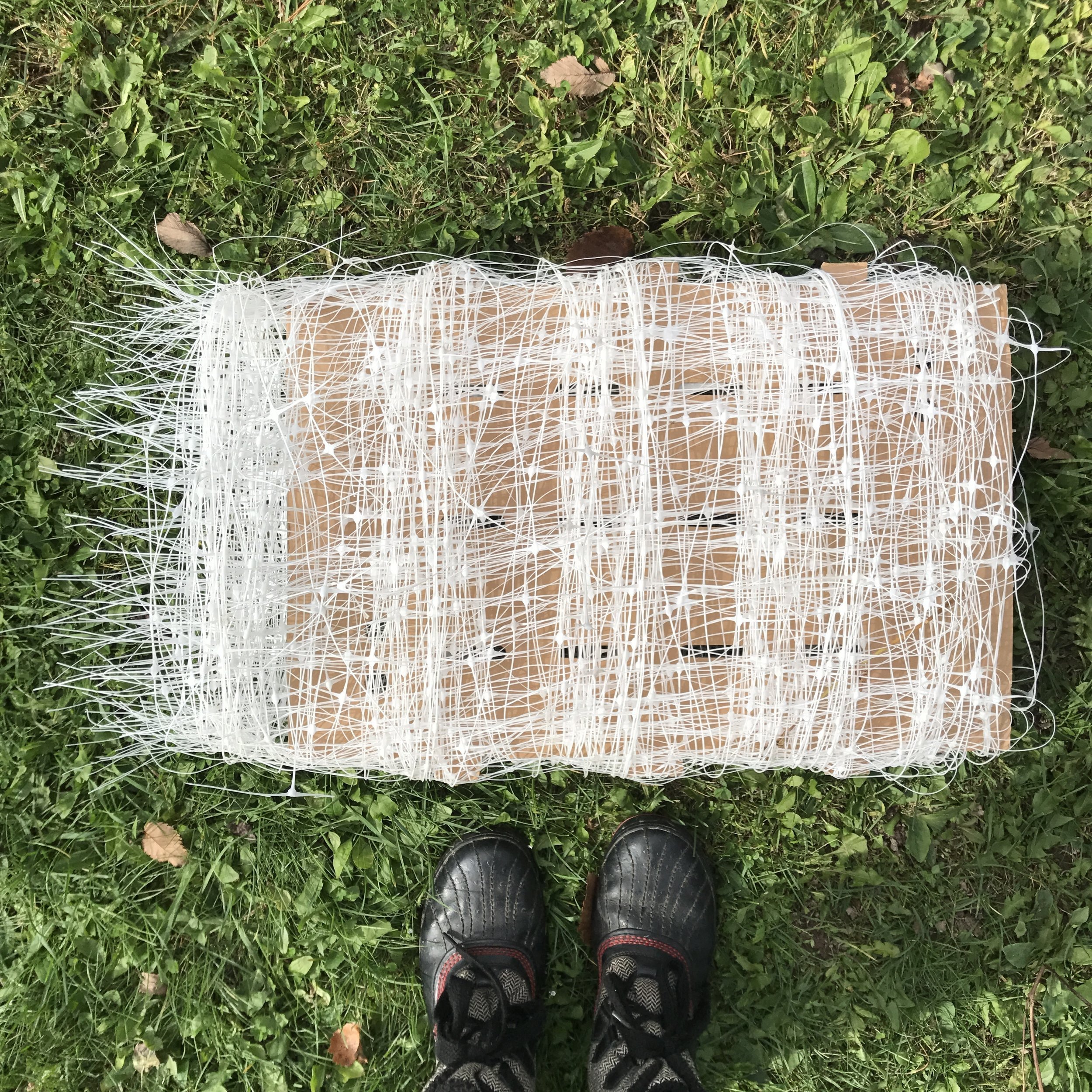‘Dack Hacks 1 & 2
Necessity breeds innovation, right? There have been several instances when I've found myself a little stuck or panicked - mostly by incoming weather or frosts. I am limited right now on our new farm in several ways. My plants aren't grown in high tunnels. We have clay. Much of my growing space is more damp than I'd like it to be.
But we are in a beautiful location, and if I can think a little differently about how I do things and figure out which plants will work best for us, things will really take off.
Here are a couple of little things that have helped me along this month. I'll call them 'Dack (short for Adirondack) Hacks'.
'Dack Hack 1: Sunflower Saver
Problem: My late sown sunflowers had not bloomed yet. Frost was looming. I needed those sunflowers for wedding and event work and late season farmers' markets.
A row of Procut sunflowers that were sown really late - July 31. The "Sunflower Saver" got them through to bloom time for late markets.
Sunflowers left to the elements (left), sunflowers saved by improvised high tunnel cover (right)
Solution: Build an improvised "high tunnel" with supplies I had on hand.
First, I pulled the 4ft low tunnel hoops out of the bed. These were used to protect the sunflower seedlings from heavy rains early on.
Next, I drove in 6ft t-posts at regular intervals (about every 5 feet worked) down both sides of the bed.
I attached 4ft electric fence posts (with the electrical conduit (EMT) hoops on them) to the tops of the t-posts with 2 zip ties each, making sure that about a foot or two (just be consistent) overlapped with the posts. You will want your hoops to be tall enough to float above the flowers and to allow room for the plants to grow more if they haven't reached maturity yet.
Then, I took 2, 10ft-wide pieces of frost cover the length of the bed plus about 10 feet and stapled them together to make a double wide piece. (Overlap the long edges and fold the seam over so that there wouldn't be a gap for cold air to pass though.) I used lots of staples-- but, if you're feeling ambitious- you could sew them together.
On one long side edge of the new, doublewide frost cloth make small bunches of the fabric every ten feet or so and tie on a water-filled plastic bottle at each interval with bailing twine or some kind of string. Leave each string about 4 feet long (with the water bottle weight at the end of it) for a 4ft wide bed. These will help you pull the double heavy fabric over the top of the new "higher tunnel" and give you a little more control in the wind. (This step is optional)
Pull the extra length of the fabric together at the ends of the bed to close up the coat. Overlap and fold them together and put in a few staples (these are temporary and will be popped off in the morning when you remove the jacket).
*Note: pulling the "coat" over the hoops can be tricky. It is definitely easier with a helper, but I often had to do it alone. You might also need some kind of wand to help direct the cloth over the hoops. An extra electric fence post can be helpful. Put an old tennis ball on the end if you are worried about poking holes in your fabric as you guide it over the hoops. The "Sunflower Saver" will help save your plants from frosts on cold, clear nights. If rain is in the forecast, leave the coat off. You shouldn't have a frost, unless things clear up in the night and the temperature drops. In that case, set your alarm clock!
All buttoned up for a cold night.
'Dack Hack 2: Hortonova Happiness
I have a love-hate relationship with our Hortonova trellis netting. On one hand, it helps control both tall vine crops and lanky field grown flowers that could be damaged by wind. On the other, we are constantly tripping on the stuff, it is a real pain to pull away from mature plants in October, and it inevitably ends up in a messy knot at the end of beds after we pull it up. Unfortunately it doesn't come with any storage recommendations. I'm sure other farmers have come up with their own solutions (please share ideas in the comments!). This works for me.
Problem: Massive "tumbleweed" piles of 85ft long trellis netting. Agh. That is the stuff of nightmares in my mind.
Solution: Use the toothed-edge cardboard tops that come with fall bulb crates as spools for trellis netting. Fold 4ft netting in half length-wise and wind it around the cardboard lids. The tooth edges catch on the netting and prevent it from unwinding. Store your netting "spools" in neat stacks that can be easily unwound in the spring. Voila!
Have an easy "hack" to share? Please start a thread in the comments. I'm sure lots of people (myself included!) are eager to learn from you.








